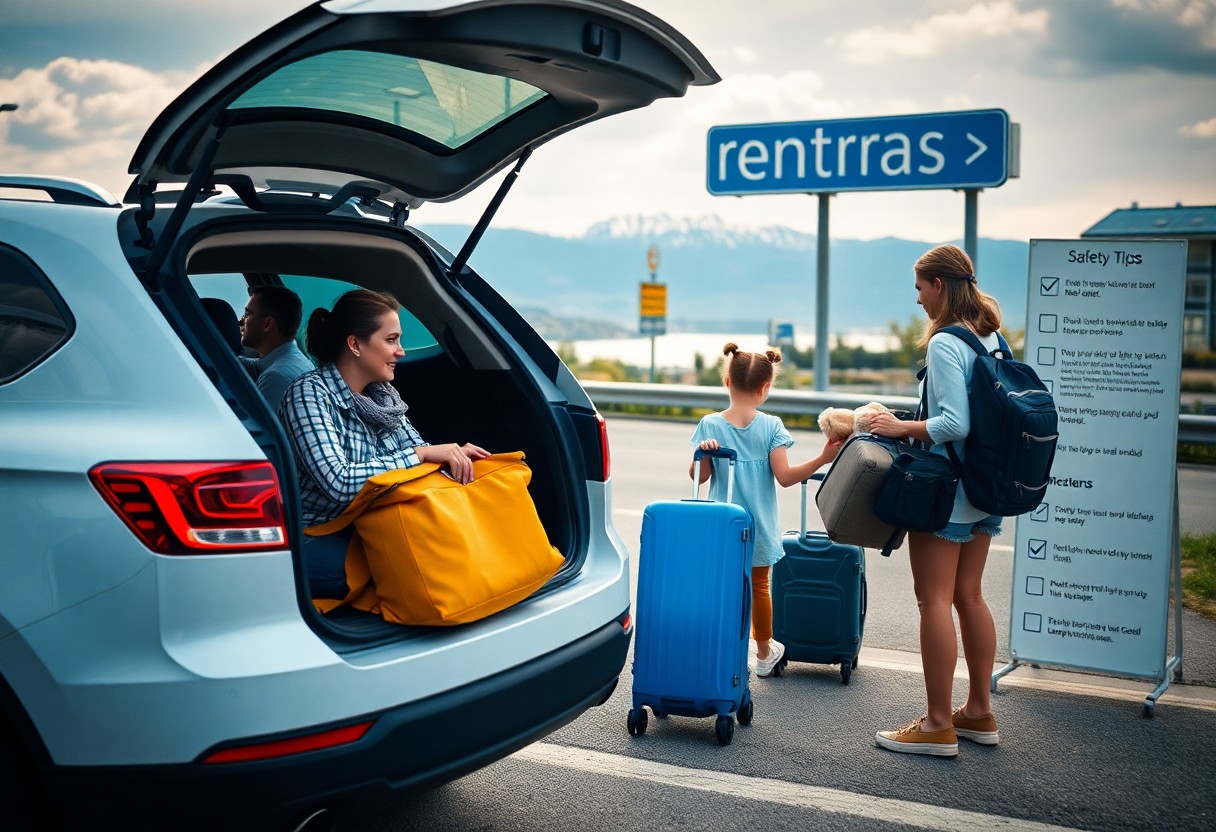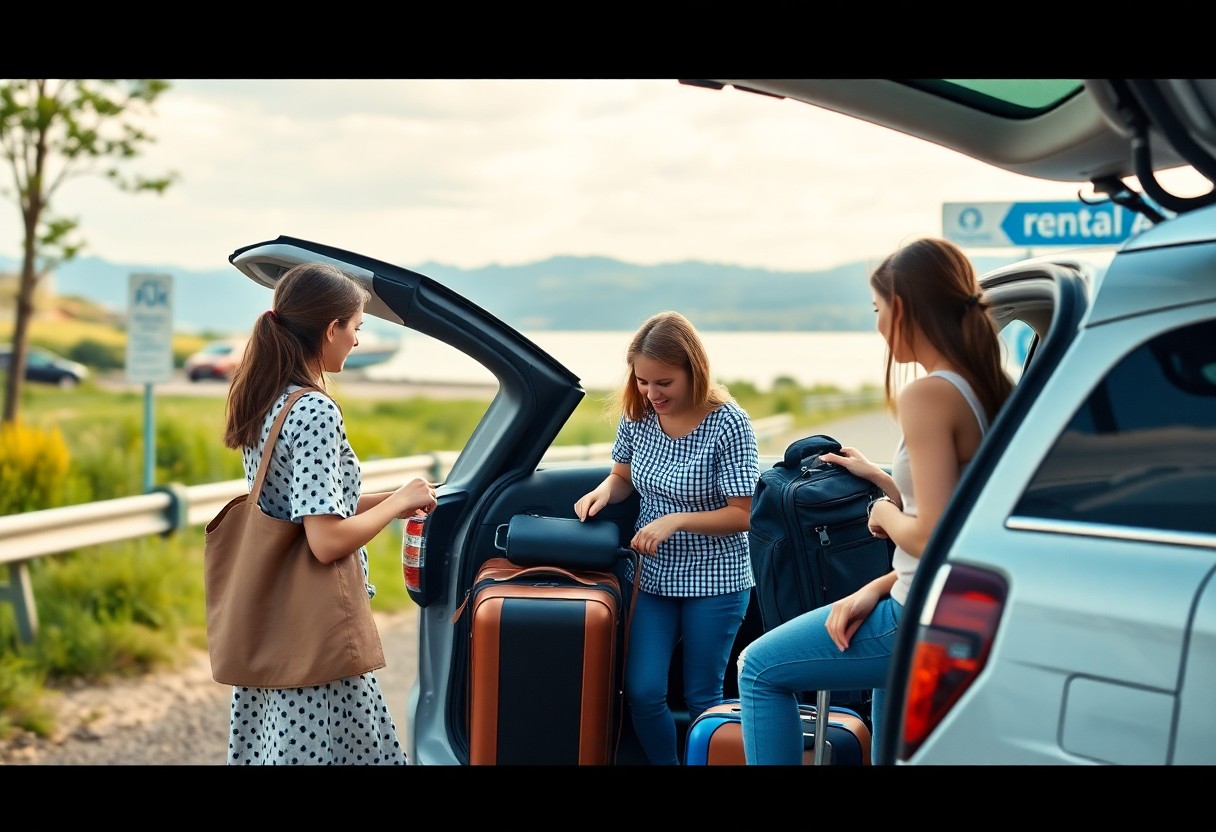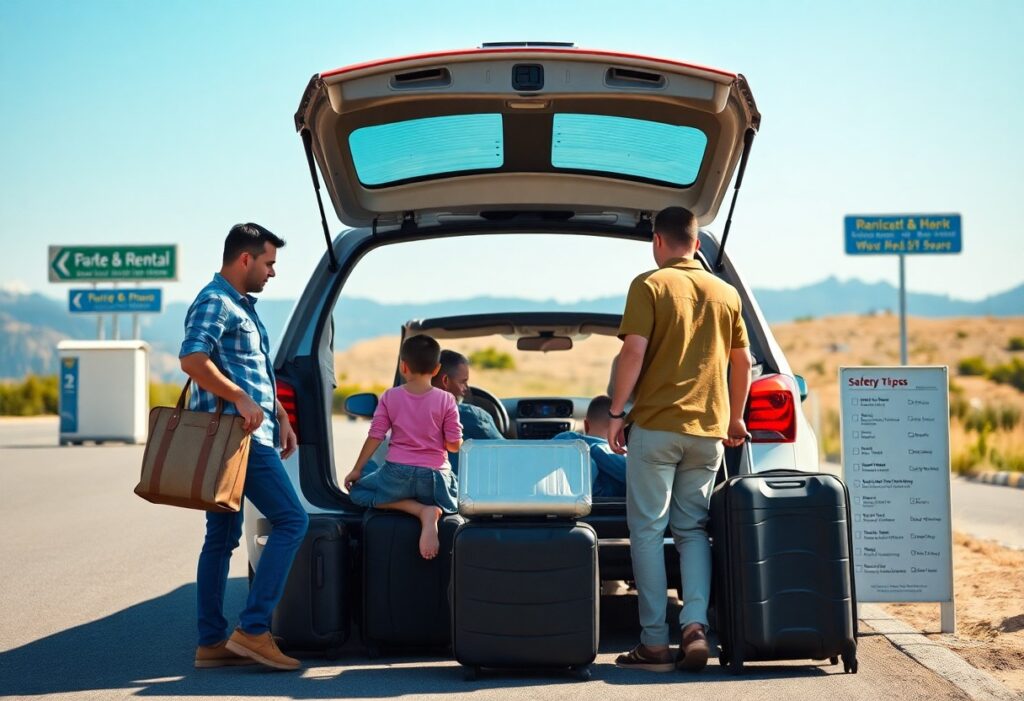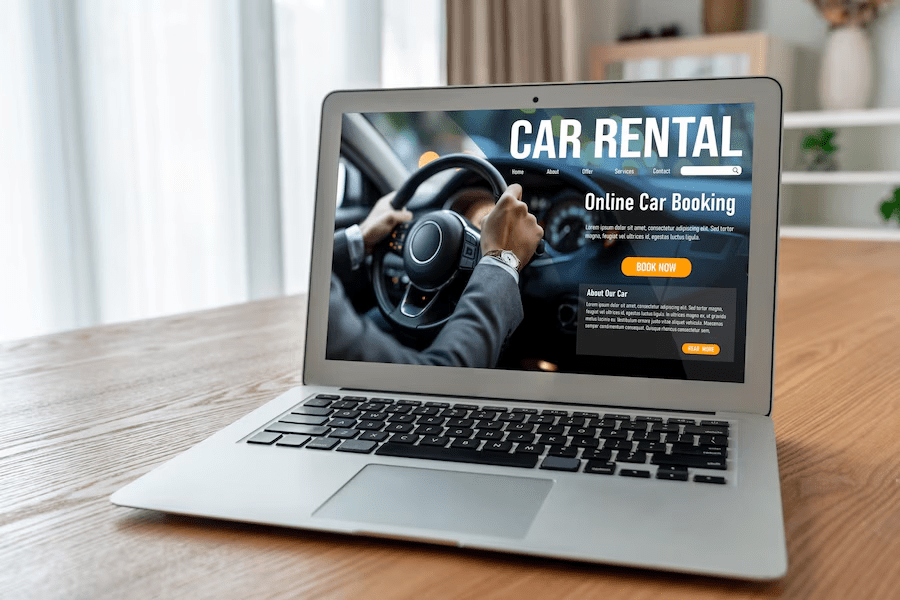Safety should be your top priority when renting a car for your next journey. Understanding the proper precautions can make the difference between a stressful experience and a worry-free adventure when planning to hit the road in a rental vehicle. From thoroughly inspecting your rental car to knowing the local traffic rules, you must consider several key factors to ensure your safety. A proper vehicle check and documentation verification before driving off the lot can help prevent unexpected issues during your trip. Your rental experience doesn’t have to be complicated – with the proper preparation and knowledge, you can enjoy a secure and comfortable journey in your temporary vehicle.
Pre-Rental Preparations
Before you head to the rental counter, take time to research your insurance coverage options. Your personal auto insurance and credit card benefits might offer rental car coverage, potentially saving you money on additional insurance. Make a checklist including your valid driver’s license, credit card, and insurance documentation to ensure a smooth pickup process.
Rental Agreement Essentials
Examine the rental agreement’s fine print to protect yourself from unexpected charges. Pay special attention to the fuel policy, mileage limitations, and damage assessment procedures. You’ll want to understand the terms for returning the vehicle, including acceptable fuel levels and timing requirements. Data shows that 65% of rental disputes arise from misunderstandings about these basic terms.
Choosing the Right Rental Company
Around 85% of satisfied customers cite company reputation as a critical factor in their rental experience. Look for rental agencies with positive customer reviews, transparent pricing, and 24/7 customer support. You’ll benefit from choosing a company with multiple locations and a diverse fleet of well-maintained vehicles.
Due to rental companies’ varying standards, you should research their vehicle maintenance schedules and safety records. The best rental companies perform regular safety inspections on their fleet, maintain vehicles according to manufacturer specifications, and offer roadside assistance. Before booking, you’ll want to confirm these services are included in your rental agreement.

Vehicle Safety Checks
Some imperative safety checks can distinguish between a smooth journey and a troubled one. You need to inspect the rental vehicle thoroughly before driving off. According to the National Highway Traffic Safety Administration, proper vehicle inspection reduces accident risks by 40%.
Initial Inspection Points
By following a systematic approach, you can ensure your rental car is road-ready. Start by checking the tires’ condition and pressure, testing all lights and signals, verifying the brakes’ responsiveness, and examining fluid levels. Your safety depends on these essential yet critical inspection points.
Documentation Requirements
Before hitting the road, you must secure all necessary documentation. Ensure you have your valid driver’s license, rental agreement, insurance papers, and vehicle registration. These documents protect you in case of unexpected situations during your journey.
Car rental statistics show that 85% of rental-related issues stem from incomplete documentation. It would help if you photographed or scanned these documents as a backup. Keep the rental company’s emergency contact number in your phone, and store physical copies of all records in the glove compartment for quick emergency access.
On-Road Safety Measures
Your safety should be the top priority if you’re driving a rental car. Ensure you maintain safe following distances, stay within speed limits, and avoid distractions like mobile phones. According to the National Highway Traffic Safety Administration, distracted driving claimed 3,522 lives in 2021, so keep your focus on the road.
Local Traffic Rules
Local driving regulations can vary significantly between cities and countries. It would help if you could familiarize yourself with turning restrictions, parking zones, and speed limits. Studies show that tourists who are unfamiliar with local traffic laws are 50% more likely to be involved in accidents, so take time to learn the basics before your journey.
Navigation Guidelines
About 70% of rental car accidents happen because drivers get lost or distracted while finding their way. Set up your navigation system before starting your journey, and use voice directions to avoid looking at the screen while driving. Your rental vehicle’s built-in GPS or a reliable navigation app can help you stay on course.
Enhancing your navigation safety includes preloading offline maps for areas with poor connectivity, marking your rental car’s parking location, and having a backup navigation method. You should also plan your routes during off-peak hours, as statistics show that accident rates are 25% lower during these periods.
Emergency Preparedness
Not all journeys go as planned, so proper emergency preparation is vital for safety. Your rental experience requires a solid emergency plan that includes knowing local emergency services, keeping crucial documents handy, and understanding your rental company’s breakdown procedures. Statistics show that 85% of car rental emergencies are handled more efficiently when drivers are adequately prepared.

Essential Contact Information
The first step in emergency preparedness is gathering critical contact numbers. Your emergency contact list should include your rental company’s 24/7 assistance line, local police, roadside assistance, and nearest medical facilities. Keep these numbers in your phone and as a physical copy in the vehicle. Quick access to these contacts can reduce emergency response times by up to 50%.
Emergency Kit Requirements
Before starting your journey, ensure your rental vehicle has a complete emergency kit. Your kit should contain a first-aid kit, flashlight, essential tools, warning triangles, and a high-visibility vest. Studies show that having a proper emergency kit can prevent 60% of roadside situations from becoming significant emergencies.
Understanding the components of your emergency kit can make the difference between a minor delay and a major crisis. Your kit should also include jumper cables, a spare tire in good condition, and essential repair tools. Data indicates that 40% of rental car incidents can be resolved using essential emergency kit items, saving you time and ensuring your safety on the road.
Journey Planning
Despite your familiarity with driving, planning a journey in a rental car requires extra attention to detail. You need to factor in variables like unfamiliar roads, different vehicle handling, and local traffic rules. Studies show that 73% of car accidents happen within 25 miles of home, making thorough journey planning even more critical when driving in new locations.
Route Mapping
With modern GPS technology, you should still download offline maps as backup navigation. Plot your primary route and identify at least one alternative path. Consider factors like road conditions, traffic patterns, and construction zones. Your route should avoid high-risk areas and include well-lit main roads, especially during night driving.
Rest Stop Scheduling
You need a break about every two hours or 100 miles. Research shows that driver fatigue contributes to 20% of road accidents. Plan your stops at well-maintained, populated areas along your route. These locations should offer vital services like restrooms, food, and fuel stations.
While mapping your rest stops, you should consider peak travel times and seasonal factors. Your planned stops should align with meal times and natural breaks in your journey. Avoid driving between 2 AM and 6 AM, when fatigue-related accidents are most common. Schedule longer breaks during these hours if your journey spans multiple days.
Weather and Traffic Considerations
Unlike your vehicle at home, driving a rental car in unfamiliar territory requires extra attention to weather and traffic conditions. It would help if you adapted your driving style to local weather patterns and traffic flow, especially when navigating through high-risk areas or during adverse weather conditions. Your safety depends on staying informed and making intelligent decisions based on current conditions.
Weather Monitoring
In addition to checking the forecast before your trip, you should monitor weather updates throughout your journey. Download reliable weather apps that provide real-time alerts and hourly forecasts for your route. During winter months, you’ll want to ensure your rental vehicle is equipped with appropriate seasonal tires, and in summer, verify that the air conditioning works properly for your comfort and safety.
Traffic Updates
You have multiple tools to avoid congestion between navigation apps and local traffic reports. Use real-time traffic monitoring apps to identify potential delays and plan alternative routes. Studies show that 40% of car accidents occur during peak traffic hours, so staying informed about traffic patterns in unfamiliar areas is vital.
Also, you should set up traffic alerts on your phone before starting your journey. Consider that morning rush hours (7-9 AM) and evening peaks (4-6 PM) typically see the highest congestion rates. Plan your travel schedule around these times when possible, and always maintain a safe following distance in heavy traffic situations.
To wrap up
As a reminder, your car rental experience can be safe and enjoyable when you take the proper precautions. You’ll benefit from inspecting the vehicle before departure, understanding your rental agreement, and staying alert to local traffic rules. Keep emergency contacts handy, plan your routes, and maintain regular rest stops during long drives. Your preparation makes the difference between a stressful experience and a smooth journey. Following these safety guidelines sets you for a confident and secure adventure on the road.
FAQ
What necessary checks should I perform before driving off with a rental car?
Complete a thorough inspection of the vehicle before departure. Document any existing damage with photos, check tire pressure, test all lights and signals, adjust mirrors and seats, locate the spare tire, and familiarize yourself with basic controls. Report any issues to the rental company immediately. This documentation protects you from being charged for pre-existing damage and ensures your safety on the road.
How can I ensure I’m fully covered by insurance when renting a car?
Review your auto insurance policy and credit card coverage first to understand existing protections. Examine the rental company’s insurance options, including collision damage waiver (CDW), liability coverage, and personal effects coverage. Consider purchasing additional coverage if traveling internationally or your existing insurance has gaps. Request written confirmation of your coverage choices and keep documentation accessible during your rental period.
What should I do if the rental car breaks down or I get into an accident?
First, ensure everyone’s safety and move to a secure location. Contact emergency services if needed. Call the rental company’s 24/7 support line – they’ll guide you through their procedures. Document the incident with photos and gather information from other parties if there’s an accident. Don’t admit fault or sign any documents without consulting the rental company. Keep all receipts for expenses related to the breakdown or accident for reimbursement.





I completely agree that safety should always come first when renting a car. I remember my last rental experience and it was a bit of a wake-up call. I went through the usual checklist, but it wasn’t until I was on the road that I realized I hadn’t checked the car’s tire pressure. It was a quick fix at a gas station, but I could have avoided that little scare with a more thorough inspection beforehand.
Your experience really highlights a crucial aspect of renting a car that often gets overlooked. It’s fascinating how we can get caught up in the excitement of hitting the road without considering some fundamental checks, like tire pressure. The fact that it was a quick fix at a gas station is a relief, but it’s a reminder of how essential those pre-drive inspections are.
You’re spot on about how easy it is to overlook those basic checks when we’re all geared up for an adventure. There’s definitely a thrill when you’re about to hit the open road, but taking just a moment for those fundamental checks can really save a lot of hassle later on. I’ve had similar experiences where I’ve been in a rush and skipped a few steps, only to regret it down the line.
I came across a great article that dives into the essential attractions and practical tips for navigating LA—perfect for anyone looking to make the most of their trip while keeping those pre-drive checks in mind.
‘Ultimate Los Angeles Itinerary: Top Attractions and Tips for Your Trip’
https://rentacar24.org/la-itinerary-mustsee-attractions-and-travel-tips/.
It sounds like you had quite the eye-opener during your rental adventure! It’s funny how we often assume everything is in tip-top shape just because it’s coming from a rental company. It’s like going to a new restaurant and trusting that the chef has washed his hands. Spoiler alert: sometimes they haven’t!
It’s interesting how those little moments during a rental can really hit home the importance of safety. Your experience with the tire pressure is a perfect example of something that can easily slip our minds amid the excitement of hitting the road. It’s these minor oversights that can lead to unexpected situations that we might not fully appreciate until we’re in them.
I appreciate your reflection on those small, yet significant moments. The excitement of planning a trip can make it easy to overlook essentials like tire pressure or even making sure the gas tank is full. After my experience with the tire, I’ve become much more aware of pre-trip checks, and I’ve noticed some other things that can slip our minds, too.
I can totally relate to that feeling of excitement overshadowing those practical details. It’s crazy how easy it is to get wrapped up in the anticipation of the trip instead of the nitty-gritty. I often find that a simple checklist helps ground me; it’s funny how something as small as checking tire pressure can save you from a day of frustration on the road.
You’re so right about those little moments revealing deeper truths. It’s fascinating how something as simple as tire pressure can serve as a reminder that safety often takes a backseat to our excitement. When we’re gearing up for an adventure, it’s easy to overlook the essentials.
Your emphasis on safety when renting a car really resonates with me, and it’s a topic that can’t be stressed enough given how many people rely on rental vehicles for travel. I remember a trip I took last summer where I almost overlooked some of the essential safety checks before driving off in my rental. Thankfully, I remembered to review the car’s condition, and it turns out I caught a minor issue that could have led to a frustrating experience down the road.
It’s great to hear that my thoughts on car rental safety struck a chord with you. It’s easy to get caught up in travel excitement and overlook those crucial checks. Your experience really highlights how important it is to take a moment to inspect the vehicle. Catching even a minor issue before hitting the road can save so much hassle later on.
It’s great to hear that safety checks resonate with your experience! It’s easy to overlook those details when you’re excited about a trip, but as you pointed out, catching even a minor issue can save a lot of hassle later on. I think a lot of people don’t realize that a quick inspection of the vehicle can really make a difference.
You’re so right about the importance of those safety checks. It’s surprising how easy it is to let excitement overshadow the practicalities. I had a friend who went on a road trip without giving her car a thorough check, and they ended up stranded in the middle of nowhere because of a small issue that could have been easily fixed.
You’ve shared some incredibly valuable pointers about ensuring safety when renting a car, and it really resonates with me. Having gone through my fair share of road trips, I can agree that the thoroughness of your preparations can truly shape the entire experience.
I really appreciate the emphasis you’ve placed on safety when renting a car; it’s a topic that often gets overlooked in travel discussions. Having gone through a few rental experiences myself, I can attest that a little diligence upfront can lead to a much smoother adventure down the road—literally!
It’s great to hear you found the emphasis on safety relevant. Your experience really highlights an essential point. I often think of renting a car as more than just a means of transport—it’s a chance to build good travel habits. Checking things like insurance options, understanding the fuel policy, and inspecting the car before driving off can save a lot of headaches later.
It’s great to hear your thoughts on the importance of safety in rental car experiences. You’re right—when we plan our travels, we often get wrapped up in excitement about destinations or itineraries, and safety can sometimes take a backseat. I think you hit the nail on the head with your point about diligence; it’s those little checks and considerations that make a significant difference.
I completely agree that safety often gets pushed to the background in travel discussions. It’s one of those aspects where a little attention upfront can really shape the entire experience. I’ve had a couple of rental experiences where I didn’t thoroughly inspect the car before driving off, only to find issues later that added stress to my trip. It can really take the fun out of exploring new places when you have to deal with unexpected challenges.
You make a great point about how safety often takes a backseat in travel planning. It’s interesting how sometimes we get so caught up in the excitement of exploring new destinations that we overlook crucial details like the condition of our ride. I can relate to that stress. I remember rushing into a rental and not giving the car a proper once-over. It turned out I had a tire with low air pressure that I didn’t catch until I was already on the highway. That little oversight ended up being a worry during my trip.
I can definitely relate to that moment of rushing into a rental without taking the time to check everything out properly. It’s easy to get swept up in the excitement of the adventure ahead. I once made a similar mistake and ended up driving a car that had a few warning lights flickering on the dashboard. That experience taught me to prioritize safety first—even if it means taking a few extra minutes before hitting the road.
You nailed it! Safety tends to play hide and seek in rental conversations, doesn’t it? I mean, who doesn’t want to ensure their ride doesn’t turn into a drama on four wheels? A little prep goes a long way—like checking for those “quirky” scratches and dents. It’s like finding the hidden treasures of car imperfections before they become your new best friends—complete with their own backstory.
You bring up a great point about those “quirky” scratches and dents. They often tell a story about the vehicle’s history, and it’s interesting how many people overlook them during the rental process. It’s almost like we dive into the excitement of a new ride and forget about those hidden imperfections that could lead to unexpected charges later on.
You raise an important point that often falls by the wayside when people dive into travel plans. Safety in car rentals is a nuanced topic. It’s not just about choosing a reliable company or getting insurance; it goes deeper than that. Personal experiences often shed light on specific practices that help shape a positive outcome on the road.
I really appreciate the emphasis on safety in your blog post; it’s an often overlooked aspect of renting a car that can tremendously impact our travel experiences. I remember a trip I took last year where I skipped a thorough inspection of the rental vehicle, and it turned into a bit of a nightmare. The car ended up having a slight issue that I didn’t catch until I was already on the highway. Thankfully, it didn’t lead to anything dangerous, but it definitely added stress to what was supposed to be a relaxing getaway.
You’ve raised some crucial points about safety when renting a car, and I appreciate the emphasis on preparation and awareness. It’s interesting how often these considerations get overlooked in the rush of planning a trip. For instance, I’ve learned from personal experience that simply doing a thorough inspection of the vehicle isn’t just about avoiding potential mishaps; it can also save you from financial liabilities later on. A couple of years ago, I rented a car that had visible scratches and dents. I made sure to document everything with photos before driving off, which proved invaluable when I returned the vehicle and was questioned about existing damage.
You’ve highlighted an essential aspect of traveling that’s often overlooked—safety in rental car experiences. I completely agree that taking the time to inspect the vehicle before driving off can save travelers from unexpected headaches. It’s also worth noting how understanding local traffic regulations can differ significantly from our familiar roads. For instance, certain countries have different rules regarding roundabouts and speed limits, which can be quite jarring for someone used to strict highway regulations.
I totally agree that safety should be the number one priority when renting a car. I’ve had my share of rental adventures, and I’ve learned that being proactive really pays off. I always make sure to inspect the vehicle thoroughly before driving away. The last thing you want is to discover an issue that could’ve been caught early on, like a strange noise or a warning light.
You really hit the nail on the head with this! Safety in rental cars is often overlooked, but it’s so important. I remember my last trip when I did a thorough inspection of the rental before driving off the lot. I found a small dent that hadn’t been documented – it could’ve turned into a hassle later on if I hadn’t caught it right away.